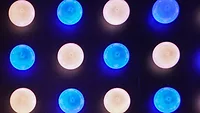Study Demonstrates Antimicrobial Efficacy of Pulsed Light Technology

Credit: TheLight via Pixabay
A recent study conducted by Penn State University researchers, with support from the U.S. Department of Agriculture’s National Institute of Food and Agriculture, has shown pulsed light technology to be an effective method for inactivating microbial contaminants. The study also found that pulsed light’s ability to inactivate microbes is largely due to ultraviolet (UV) light.
The study’s researchers explain that continuous, low-intensity UV treatment has been used for antimicrobial purposes in the food industry since the 1960s; however, pulsed light differs from continuous light in that it delivers a higher intensity of light, which results in greater microbial reduction in a shorter period of time. The team’s technique is designed to be deployed on a food conveyor and treat passing foods.
The study tested the efficacy of pulsed light against various microbes, including pathogens and fungi: Escherichia coli, Salmonella Typhimurium, Listeria monocytogenes, Bacillus cereus (vegetative cells and endospores), Aspergillus niger spores, and Penicillium roqueforti spores. The microorganisms were treated using three different broad-spectrum xenon gas flashlamps for up to 15 pulses.
Additionally, E. coli samples were treated with different filters applied to the pulsed light. Images of cell damage suggest that microbial sensitivity to pulsed light treatment differs for species, and that the majority of cell damage caused by the technique can be attributed to the UV portion of the light spectrum.
For two decades, members of the research team have studied pulsed light technology for food safety applications. The lab has tested the technique against fruits, seeds, grains, cheese, milk, apple juice, and poultry products. The team has also simulated commercial production conditions to test the technology on eggs.
The team expresses their hopes that pulsed light technology will be widely adopted by the food industry, as the method has strong food safety potential.
Looking for quick answers on food safety topics?
Try Ask FSM, our new smart AI search tool.
Ask FSM →








